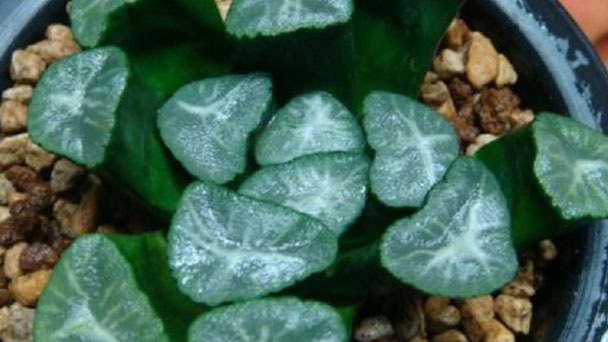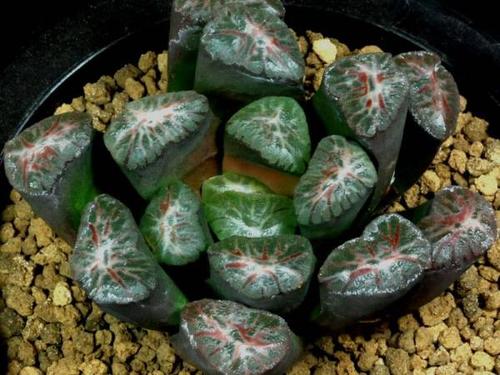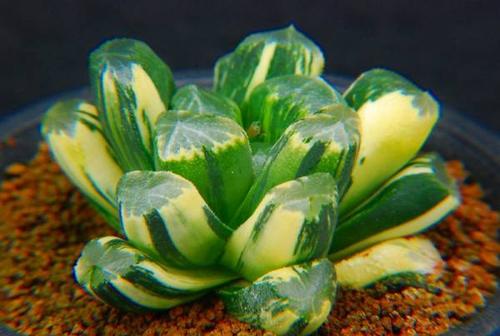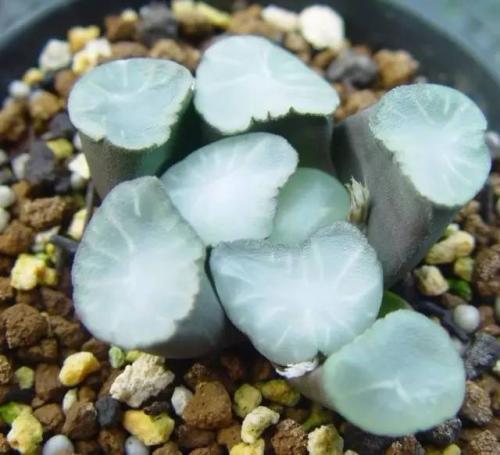How to grow Haworthia maughanii
Written by Maggie
Oct 14 2021

Haworthia Maughanii is a very valuable kind of succulent plant, so it may not be careless to start with it, but it needs careful maintenance. How to keep it?Most importantly, fertile, loose and suitable soil, with the right amount of watering and lighting, as well as the right temperature and fertilizer.If the fleshy Haworthia Maughanii grows well, it can be propagated properly and the cuttings are relatively easy to survive.

1. Proper basin and soil for Haworthia Maughanii
Haworthia Maughanii requires a fertile, loose soil that can be mixed with coarse sand and leaf litter, peat soil, and a small amount of bone meal, with sufficient nutrients and good drainage and breathability.If you want a better potted soil, you can plant it in terra-cotta and bluestone. Expensive succulents with more expensive substrates are better.
2. Water properly for Haworthia Maughanii
Watering haworthia maughanii should follow the principle of "do not water, water thoroughly", and the frequency of watering in four seasons should be fixed according to the actual situation.Generally speaking, when the pot soil dry, and then pour permeable water.Also you can’t not water it for a long time, which will lead to water loss plants stop growing, and even wilt.Whatever the season, watch the Haworthia maughanii pot soil more and water it properly if it dries.
3. Plenty of light for Haworthia Maughanii
Haworthia Maughanii needs plenty of sunlight to grow, which is acceptable except for the summer glare.Therefore, Haworthia Maughanii needs to be moved to a cool and ventilated place for maintenance during the summer when it is hot and exposed to the sun.In winter, it is best to keep Haworthia Maughanii indoors and in the sun to supplement the sun.

4. Control the temperature for Haworthia Maughanii
The temperature suitable for Haworthia MaughanII growth is between 10 ℃ and 30℃. In winter, the temperature should not be lower than 5℃, otherwise it will lead to slow growth, and if the temperature is lower, it will cause freezing damage. And the summer temperature can not exceed 30℃, must be timely shade cooling, usually can also spray moisturizing cooling around the pot.
5. Apply fertilizer rationally for Haworthia Maughanii
Generally, Haworthia Maughanii does not need much fertilizer. To promote its growth, some calcium rich fertilizer can be applied, and adequate phosphate potash fertilizer is enough. Generally, thin fertilizer is applied once a month, rather than heavy fertilizer, which will lead to root burning necrosis of the plant, which is counterproductive.

Latest Updated
- Benefits of Bugleweed - 7 Science-backed Health Benefits
- Bugleweed Dangers & Side Effects - Is It Poisonous?
- How to Plant Evergreen Trees - What You Should Know
- When to Plant Evergreens - Grow Guide for Evergreen Trees
- 12 Wonderful Evergreen Shrubs for Your Garden
- 12 Popular Evergreen Plants with Pictures for Beginners
- When And How To Prune A Lilac Bush Like a Pro
- How to Grow & Care for Lilac Vine (Hardenbergia Violacea)
- Japanese Lilac Tree (Syringa Reticulata) Care & Propagation Guide
- Shumard Oak Pros and Cons - What to Know
Popular Articles
- Winter maintenance of Antirrhinum Majus
- How to Grow Terminalia Mantaly Tree
- How to Grow and Care for Crossostephium Chinense
- How to grow Antirrhinum Majus in spring
- Peristeria Elata (Dove Orchid) Profile: Info & Care Guide
- Underwatered Snake Plant (Sansevieria Trifasciata) - Signs And How To Fix
- How to Care for Brazilian Jasmine Plant (Mandevilla Sanderi)
- How to Grow & Care for Graptopetalum Purple Delight in Summer
- Rosa Chinensis (China Rose): Plant Growing & Care Tips
- How to Care for Baby Sun Rose (Aptenia Cordifolia)